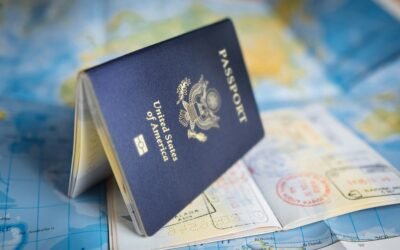“… that dream of a land in which life should be better and richer and fuller for everyone, with opportunity for each according to ability or achievement… It is not a dream of motor cars and high wages merely, but a dream of social order in which each man and woman shall be able to attain the fullest stature of which they are innately capable, and be recognized by others for what they are regardless of the circumstances of birth or position.” – James Truslow Adams
Many well-educated Germans who fled the failed German Revolution of 1848 found the United States more free than their homeland, which they believed to be an increasingly hierarchical and aristocratic society that determined the ceiling for their aspirations. Fast forward to 2025 and those same people would find today’s oligarchic, aristocratic United States to be a lateral shift at best and a complete downgrade at worst. Many could argue whether the American Dream truly existed at all, however the people of that era arguably had a much easier time believing that such a dream existed. In most cases the people of that time were able to bring the American Dream into fruition through hard work and dedication. If not for themselves, they were at least able to set the foundations for comfort and success for future generations.
“For many in both the working class and the middle class, upward mobility has served as the heart and soul of the American Dream. The prospect of betterment and to improve one’s lot for oneself and one’s children is much of what this country is all about. “Work hard, save a little, send the kids to college so they can do better than you did, and retire happily to a warmer climate” has been the script we have all been handed.” – Lawrence Samuel
Today, the idea of the “American Dream” is so blatantly disconnected from reality that many Americans are unable to even pretend such an illusion still exists in the United States. Evidence indicates that in recent decades social mobility in the United States has declined while wealth disparities have risen. Even though social mobility is lower in the US than in many European countries, many Americans are likely to believe they have a better chance at social mobility than Europeans do. However, this belief seems to be changing. Nearly 80% of Americans under age 30 don’t believe the American Dream holds true any more, and a majority over the age of 65 agree. The ideal of the American Dream has become increasingly unattainable as the reality of life in the United States no longer aligns with the promises of upward mobility, financial security, and safety despite the fact that Americans are working harder and producing more revenue than ever. Being able to procure a decent house with a white picket fence and 2.5 kids on a single, median salary is now nothing more than a far-fetched fantasy when many are having to make the choice between putting food on the table or paying the bills for their everyday needs. Taxes are high in the US despite the lack of social safety nets or assurances. Political division is ravishing the country from within. Violence is on the rise within the failing educational institutions. A health emergency can completely undo years of financial stability. Drug abuse and homelessness have skyrocketed out of control leading to the common sight of tents and encampments lining the streets of most major cities. Retirees are struggling to keep the homes that they spent their lives paying off due to the increased property taxes and insufficient incomes.
It’s becoming harder and harder for the façade to maintain itself in the face of today’s clear problems in the US, but many people that are looking for alternative options are finding that the ideal of the American Dream is not restricted to the United States at all any more. In the increasingly globalized world that we live in, Americans are discovering that the concepts of freedom, safety, security, good infrastructure, and social mobility are indeed found in abundance abroad and they are opting to explore those options to create better lives for themselves and future generations. They are discovering that the New American Dream is leaving America. I will touch on just a few of the reasons why, but keep your eyes open for future blogs and articles where I will dig deeper into each of these aspects:

The days of the United States being a country where one could simply work hard to take care of oneself and family are long gone. Home ownership for today’s current and upcoming generations is a pipe dream and where renting would once normally be an affordable alternative to owning property, Americans are also feeling the clutch of ever-increasing rent prices squeezing the quality of life out of them with each lease renewal. Housing costs have soared in major cities across the country and for working Americans that have experienced stagnant wages over the last few decades, this leaves little room for financial growth. A study recently showed that 59% of Americans in 2025 don’t have enough savings to cover an unexpected $1,000 emergency expense and half of American adults have less than $500 in savings. As the country turns more and more into a paycheck-by-paycheck nation where Americans are often forced to go into debt for the things they need, young adults are finding it increasingly more difficult to afford the basics they need while the elderly and retirees are having to make the difficult decision to go back to work or leave the United States to afford living on the meager purchasing power that their social security or retirement income provides. Everyday expenses such as healthy food, gas, utilities, and transportation have also increased dramatically. Inflation has driven up grocery prices by 20% since 2020, making it harder for people to make ends meet and most Americans are finding themselves looking for second jobs or side hustles just to get by.
Compare that to life in a country like Brazil, where $2,000 USD per month can afford you everything you’d want and need to not only survive, but thrive and enjoy your life. It’s no wonder many Americans are looking for ways to take their remote incomes elsewhere to increase their purchasing power and improve their quality of life. When I lived in the US, the rent alone for my large studio apartment was over $2,000 per month. Here in Brazil where I am living now, the rent for my 2-bedroom, 2-bathroom apartment in a beautiful, safe neighborhood is about $600 per month. For those interested in buying property, large modern homes in great neighborhoods can go for as low as $100,000 USD depending on where you live and can be up to $350,000 for some of the nicest homes in the nicest areas. I have a car that I was able to buy outright with cash due to how much money I make and save, but for those without vehicles public transportation costs no more than about a dollar and Uber rides average me about $4 per ride compared to the $35-$40 I would be spending per Uber ride in the States. As far as food goes, you can easily buy all of the groceries you need for about $200 per month and a family of four can eat well on about $350 per month. Want a nice date out on the town at a fancy restaurant? Two people can order all of the appetizers, food, and cocktails they can put down and spend no more than $100 compared to the US where you can often find yourself spending $100 per person at a mid-tier restaurant after eating and drinking conservatively. If making the most of your finances while maintaining a great quality of life is important to you and achieving your ideal of the American Dream, then exploring your options abroad may be exactly what you need.

In the United States, I thought of writing a note and keeping it in my wallet in case an emergency responder would ever need to figure out how to handle me in an unresponsive state: “Do not airlift. No ambulance rides. No overnighters in the hospital, please. Just let me bleed out.”
The truth is that most Americans would rather suffer through the pain of a medical emergency or illness than bear the financial burden associated with seeking the medical help that they desperately need. Rejecting ambulance rides, emergency airlifts, and hospital visits are a common theme among American citizens, even when they have an overpriced health insurance plan. Healthcare costs in the United States are the highest in the world, with the country spending over $14,000 per person annually on healthcare, yet ranking poorly in terms of health outcomes. A single medical emergency can push individuals into bankruptcy, especially those without adequate insurance coverage, and yet the United States has one of the highest rates of infant and maternal mortality, high death rates for avoidable or treatable conditions, an obesity rate nearly twice the OECD average (Organisation for Economic Co-operation and Development), and has the highest rate of people with multiple chronic conditions.
Much of that is due to the American healthcare system operating more like a for-profit drug cartel than a public service that people can benefit from after having paid into it. The focus on reactive “treatment” and getting people on a wide array of expensive pills contrasts starkly to other medical philosophies around the world that often focus on preventative care and curing illnesses rather than merely slapping a band-aid on them with the latest drugs. The sad reality is that in the for-profit healthcare system that the United States has, there is no money to be made in curing or preventing illnesses. We are seeing more and more people opt for treatments outside of the country when serious emergencies come up and affordable care is needed. Not only do places like Mexico, Brazil, Turkey, Malaysia, and Cuba have some of the best doctors and medical facilities in the world, but it will cost you a fraction of the price to receive the quality care that you need. The American Dream does not only revolve around financial and social wealth, but includes one’s ability to maintain good health as well. Good health is the most valuable resource that we can attain and without it, we can’t reach our fullest potential in life. Why remain in a country where your bad health is a good incentive for Big Pharma and insurance companies to make money?

Education is inextricably linked to success and with the rapidly rising costs within the US education system unprecedented student debt has become another major concern for American citizens, with the total student loan debt in the country surpassing $1.7 trillion. The average college graduate now leaves school and begins their adult life with over $37,000 in student loans, making it harder for young adults to hit the ground running in the country. Public schools in the US vary widely in quality, depending on funding and location with the country ranking 27th in the world for K-12 education despite spending more per student than many other countries. The cost of higher education is staggering, with private universities often costing more than $50,000 per year. For many middle-class families, these costs are simply unattainable, forcing students to take on massive debt.
However, several countries abroad offer free or affordable education without the burden of loans. For example, Germany offers tuition-free education at public universities, even for international students. Finland is another leader in education, providing high-quality schooling without tuition fees and maintaining a system that consistently ranks among the best in the world. Here in Brazil, public university is also free for international students.

The United States seems to be more divided and polarized than ever before both politically and socially. In addition to the wars the US is fighting and funding abroad, there’s also a plethora of wars going on internally. We’ve got the war on women, the war against masculinity, the war on minorities, and the war on white males just to name a few. Dating feels more like a headache and a chore more than ever with most people arguing that the dating pool just doesn’t offer the same quality options as have existed in the past. Civil discussions and disagreements of politics feels nearly impossible as increasingly-radicalized constituents on the left and the right opt more and more for inflammatory rhetoric and regurgitation of talking points heard on social media and mainstream media. With all of these things eroding social trust, shared values, and a sense of opportunity, there’s also record lows of trust in the US government and rightfully so. Lobbying, which the rest of the world would call corruption, has entirely compromised the integrity of the American political system and while the political and corporate elites continue to expand their oligarchical sphere of power and influence, they’ve also thoughtfully played a role in pitting American citizens against each other. Partisan media and social media reinforce tribal thinking, leaving no room for compromise leaving people are afraid to speak openly, even with family and friends. Public discourse is marked by outrage instead of solutions.
In contrast, countries like Denmark, Finland, and New Zealand score high in social cohesion, trust in institutions, and political transparency. Citizens report strong satisfaction with governance and daily life, and although this doesn’t mean disagreements don’t occur, these nations show that it’s possible to have disagreement without division—and that’s something more and more Americans are starting to seek.








